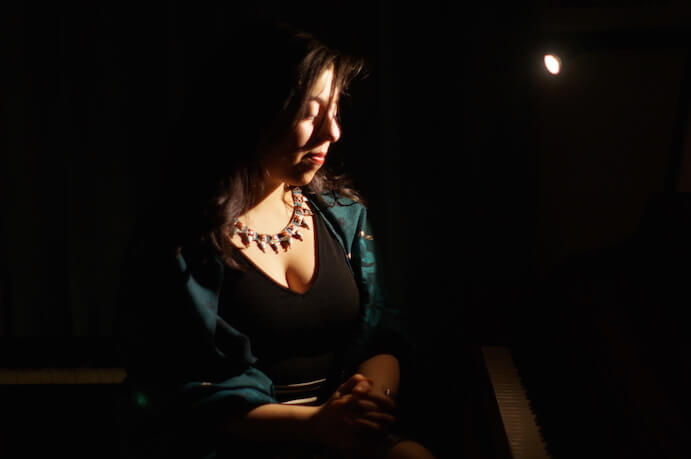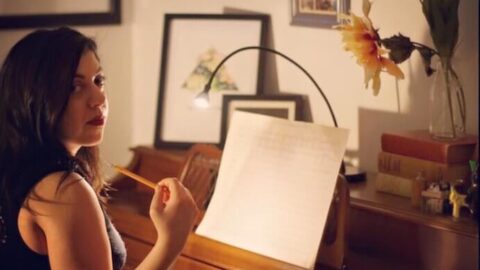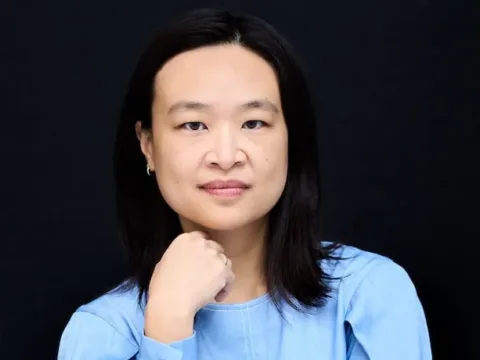When your work draws heavily upon personal experience, such as fleeing Kuwait in your piece Border Crossings, can you describe how you interweave your emotional, internal knowledge and what you want to say as a composer/musician?
The trajectory of my life has been entirely defined by borders and boundaries, or a lack thereof, both physically and historically. My family has been uprooted not once, but twice: first from Palestine, and then again from Kuwait. This translates to a very powerful sense of longing for a grounded existence. I have lived in so many places, and most of the time it feels like I don’t really belong anywhere, not to any one place, person, or thing. This is a defining aspect of being part of any diaspora, and so themes of displacement, exile, and identity feature prominently in many of my works. At the same time, however, my music affords me the opportunity to be grounded, to be part of a really incredible community of artistic collaborators. So while I aim to establish that sense of a borderless, boundless, existence in my work, I also aim to reclaim history for myself, the women in my family and my community.
For example, in the first movement of Seamstress, I incorporate one of the first ever motion pictures filmed of Ottoman Palestine, dating back to 1896 and recorded by the Lumiere Brothers. When I took that footage and added an improvised piano and Arabic vocal soundtrack scored by myself and Palestinian multi-instrumentalist and singer-songwriter Huda Asfour, it immediately took on a new meaning.
Huda sings “Between two shores and two strange lands, In a grave dug in seventh heaven, I am leaving and I am returning.” Her lyrics capture the despair of the Palestinian diaspora and at the same time, the humanity and beauty of longing, love, and the power of music in the face of exile. The performance functions as a resistance to the boundaries often imposed by politics and nation-states on marginalized communities. That is just one way I interweave my internal knowledge and experience with my compositional ideas and themes.
Seamstress is a project with an incredible long-term scope. Was the germination of the idea, conducting of the interviews, composing of the music, and creating the multimedia all separate ideas or did you conceive of this project as one whole from the beginning?
I first envisioned it about a decade ago as an opera with a libretto based on the histories of four women in my family. I remember talking over my ideas with Kristin Kuster and Evan Chambers early on while I was completing my masters degree, and they expressed their support from the very beginning.
When I was 13, I read “In the Time of the Butterflies” by Julia Alvarez, a historical novel about the Mirabal Sisters of the Dominican Republic who fought against the dictator Trujillo for years before being assassinated in 1960. The book takes the reader back and forth through time non-linearly, and from the point of view of four different sisters. I remember feeling a little lost while I was reading it, the dates and years all jumbled together. But I felt solidarity with the sisters. I felt their pain, anger, the need to resist oppressive regimes, and a familiar, heavy sadness.
I reread it again as an adult and realized that memory functions very much in the same way, especially with regard to intergenerational trauma and traumatic historical events. In the end, it’s not so much the timeline that matters, but the emotions, the memories that accompany them. The music in Seamstress is very much informed by emotional episodic memories, and the imagery and film enhances those feelings, to bring the viewer closer to the subject and their life.
I was living and working in Palestine and gathering all of the materials for the project, but I had no idea how the structure would pan out until I started my doctoral program at the University of Michigan, where I would have more time, resources ,and the funding to piece it all together into the multimedia documentary song-cycle it is today.
How does melody and vocal writing inform your work in Seamstress? Can you be specific in how you work with the melody and rhythm of spoken text alongside sung sounds?
The oral histories are the most important, the most critical part of the work, because they are the root of the entire narrative musically and visually. With the oral histories, we can now begin discussing the voice, memory, identity, storytelling, storytelling as resistance, women’s history, diasporic feminist studies, women’s culture… And the oral histories are a score in and of themselves. I actually studied them aurally as if they were scores, each one individually, I memorized their peaks and valleys and only selected what I found to be the most powerful images and sentences on which to base the entire project. I transcribed and translated them in the same way I would transcribe a jazz improvisation solo, and I only used the most powerful portions of them as thematic content. I translated the Arabic into English, and then I set the translations. In keeping with the non-linear theme, the melodies and rhythms in the score are cyclical, repetitive, and reinvent themselves through different genres, creating a sort of transcultural soundscape. The musical motifs and rhythms are imitation-heavy, and the use of canon features prominently to evoke that sense of childhood nostalgia that storytelling often provides the listener with.

In your composing, specifically in Seamstress, do you feel that your compositional language expands, defies, and/or ignores notions of genre?
The piece itself is a work of defiance and resistance, but I still utilized contemporary classical production to get the message across and evoke empathy in my audience. In that way, I expand upon different genres. I play with everything from baroque to classical to romantic to folk and experimental/electronic. I had a lot of fun juxtaposing more classical genres with contemporary imagery, landscape, and narrative.
Effectively, when I am not taking the audience backwards in time visually, I am still doing it sonically, and hopefully that non-linearity creates a timeless quality and universality that humanizes these people’s stories across time and space.
This could be anyone. Anytime. Anywhere.
What advice do you have for other musicians and composers who want to be more relevant to contemporary cultural and world issues in their art-making practices?
My advice would be to tell other young women and people of color, “You already are relevant. Don’t let anybody make you feel otherwise.” Many of our institutions teach us that the things that are relevant aren’t worth featuring in our work. For a long time, people in positions of power and privilege were afraid of being or sounding too “political,” and look where that has gotten us. Recognize whatever privileges you may have and speak up for the truth. There are also some incredible programs for artists geared towards social change and creative inquiry like the teaching artist training program through Community Word Project in New York City. Apply for it.
In terms of your artwork, you don’t have to sing in English. You don’t have to only compose for orchestras and operas if that’s not your thing. You can sing in a rock band if you want. You can dance ballet and incorporate hip-hop into the repertoire if you want. Your culture, your heritage, and your traditions are just as valid and just as important.
My advice for composers, specifically: You don’t always have to be making art or composing in the way you’re taught matters, at a table, with a pencil in hand and Sibelius in front of you. Seamstress took me five years to finish. Most of that time, I was out filming, making friendships, collaborating, reconnecting with my family, and working full-time and in my community so I could support myself financially. If you can redefine what it means to be working on your art for yourself, you art will become much freer.
Last, I’d like to address the importance of youth empowerment and education because I believe that is where all our hope and strength lies. I strongly advise creating programs, mentoring, and community workshops and spaces for young people, especially young women and women of color. An example of this would be to get involved with local organizations. At the end of July and beginning of August, I was volunteering with Girls Rock Detroit, which was co-founded by my colleague Melissa Coppola, and I can tell you it is one of the most inspiring weeks you can spend as an artist and an educator, surrounded by so many strong, talented and smart girls and women/non-binary people from the community. During a sexual harassment workshop led by Brooke Harris of Hollaback Detroit, we were discussing the many “isms” and one of the girls raised her hand and spoke out against Sexism, Islamophobia, Homophobia, Racism, Ableism, Transphobia, and Fatphobia. That’s why working with young people is so important–because they get it.
Seamstress- a documentary song cycle by Donia Jarrar from Donia Jarrar on Vimeo.
























